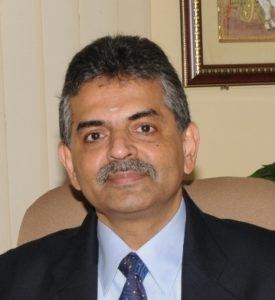
When we talk of a scientific mind in the AC electricity supply system, one cannot but admire the Siberian-American inventor Nikola Tesla. What drove him was the following context from where he came: “The desire that guides me in all I do is the desire to harness the forces of nature to the service of mankind.”
Harnessing power, whether it is hydro, wind, solar or any other source, require switchboards in standard and customized designs, to make this happen. It is here that protection, measurement, automation, monitoring and management of electricity takes place.
This article attempts to explore the way this is done presently and could be done going forward.
When I started a company called Load Controls in 1990 to manufacture switchboards, I did so as everyone else was doing in a conventional welded design. We were besieged with problems of:
- handling last minute changes
- inflexibility of dealing with panel dimension and modules changes post manufacture
- quality heavily dependent on skilled labour
- time consuming manufacturing process and hence constrains in on-time delivery
- not scalable and so economies of scale were not possible, hence expensive
On various trips, abroad to countries like Singapore, Sri Lanka, Dubai and Denmark, I reckoned that to overcome the above disadvantages, I had to shift from a welded design to a modular design of switchboard manufacturing. Thus, was launched MODUTEC our modular switchboard enclosure systems in the year 2000. These modular panels helped Load Controls overcome all the above challenges and helped grow the business steadily since then.
What the standardized designs open up for the switchboard industry is the possibility of franchisee or alliance partnership associations across geographies.
Today, we have many switchgear companies launching their own modular switchboard designs in India and partnering with local panel builders to offer a technologically smarter and type-tested system to electrical installations. For example, we have L&T with their TI genres, Schneider with Blockset and Prisma models, ABB with their R2K panel offerings, Siemens with their Seipan versions, Legrand with their XL Cube standard, and so on.
Customers are slowly preferring to go the way of these standardized modular designs of panels since the type test certification of IEC 61439 calls for 13 tests and these are to be done with specific make of switchgear in the panels. Further, end-users felt the need for flexibility in forms of construction, types of switchgear and desired certainty in compliance to specifications related to dust, liquid and vermin protection, painting quality, bus bar systems to handle both short circuit currents as well as temperature rise, mechanical robustness and so on. All these offer the end user, peace of mind and hence modular design in switchboards is gaining acceptability and finding its place in tender specifications as mandatory.
Other benefits of the modular designed switchboards are that even after the switchboards are installed at site, should there be changes in converting two modules into one big one or vice versa, this would be possible, unlike in welded designs. Moreover, most designs permit for hinged door reversibility from LHS to RHS and vice versa, a feature which is again absent in welded versions.
What the standardized designs open up for the switchboard industry is the possibility of franchisee or alliance partnership associations across geographies. With a centralized mechanical enclosure manufacturing unit, one could have the flat pack kits dispatched to various cities wherein the electrical value addition and customization can take place with all the scalable features supporting the engagement. Unified branding would further help gain Customer confidence and the arrangement would aid harness power faster, smarter & safer!
Internationally, we have brands of modular switchboard enclosure systems from companies like ELSTEEL, Logstrup, CUBIC and Kikbloc leading such technologies. In India apart from MODUTEC we also have BCH from Faridabad supporting other panel builders engage with them in this cutting edge way of building switchboards and distributing energy. It will not be long before the switchboard industry consolidates to wipe out the conventional welded players and replace them with these advanced methods to harness power.
Also Read: How we should “Make in India”


